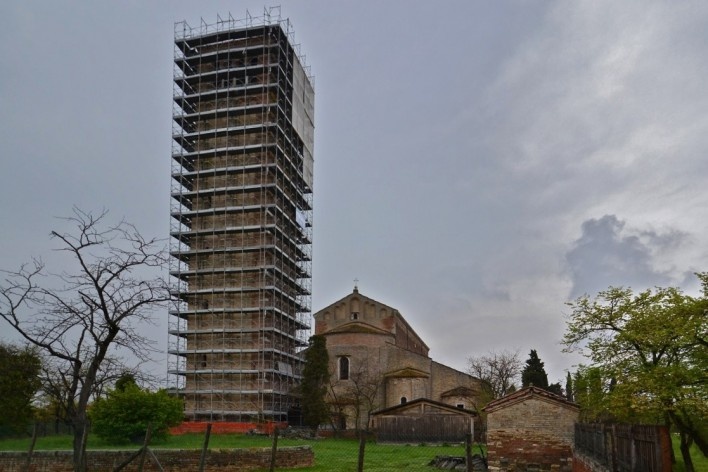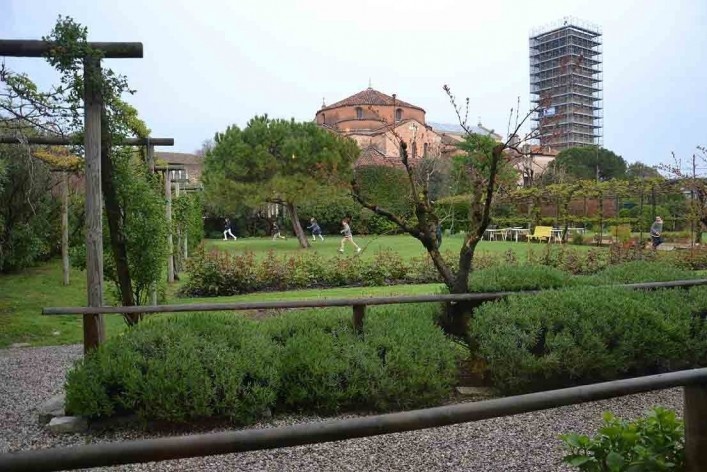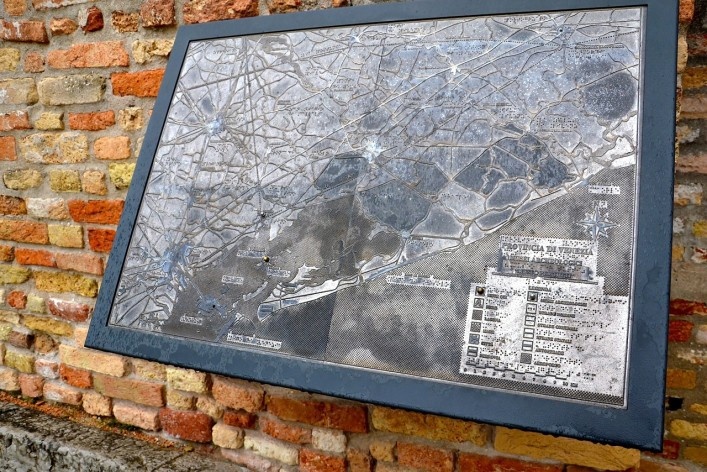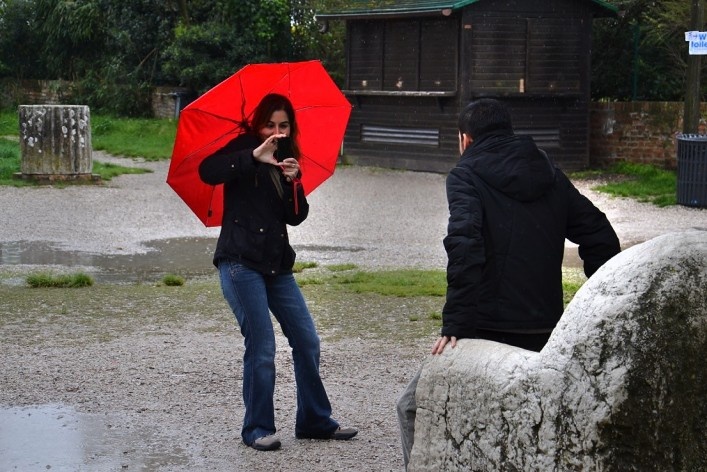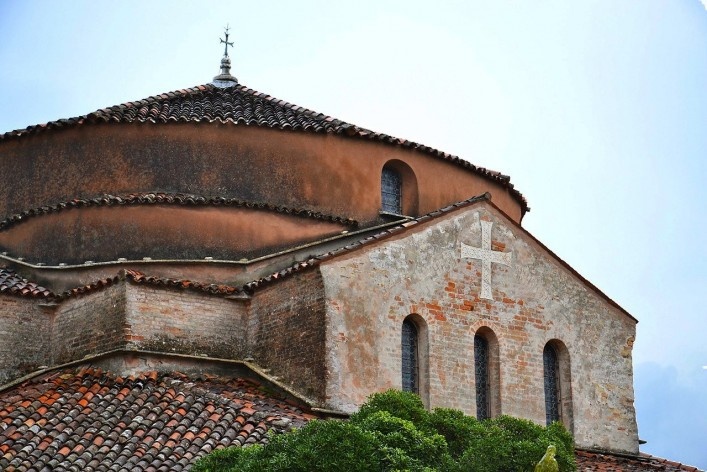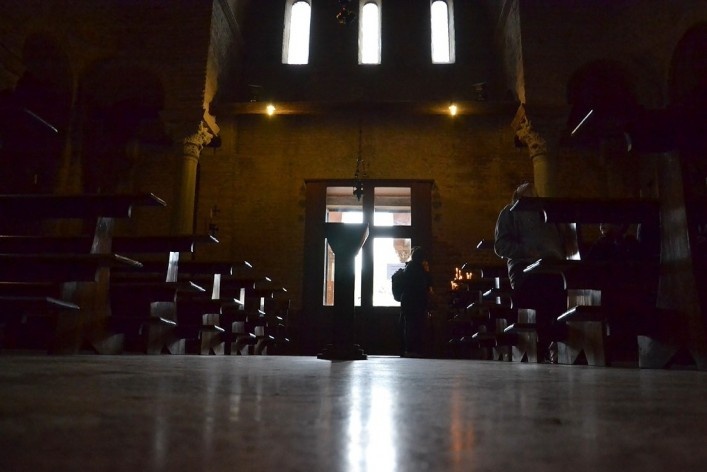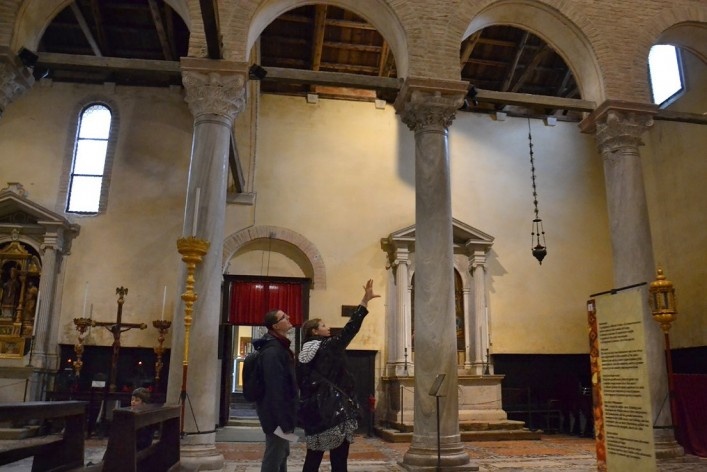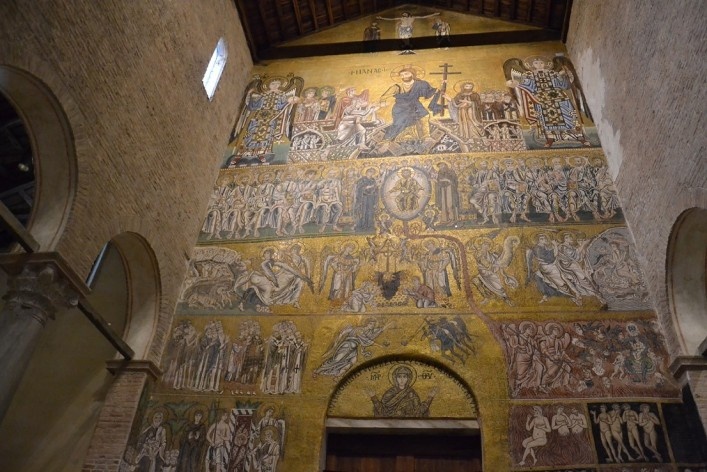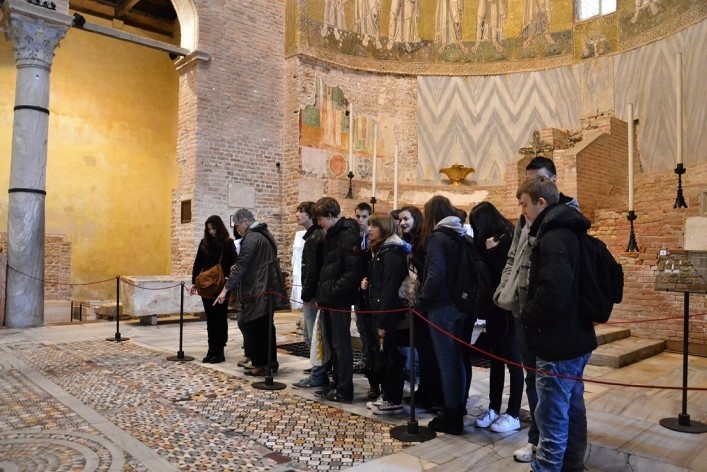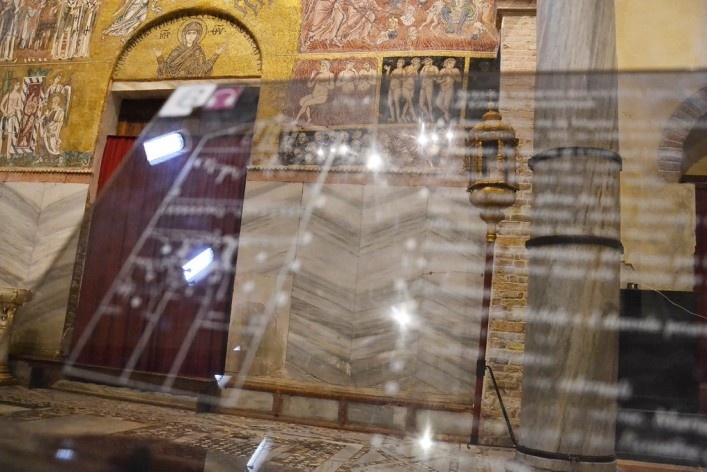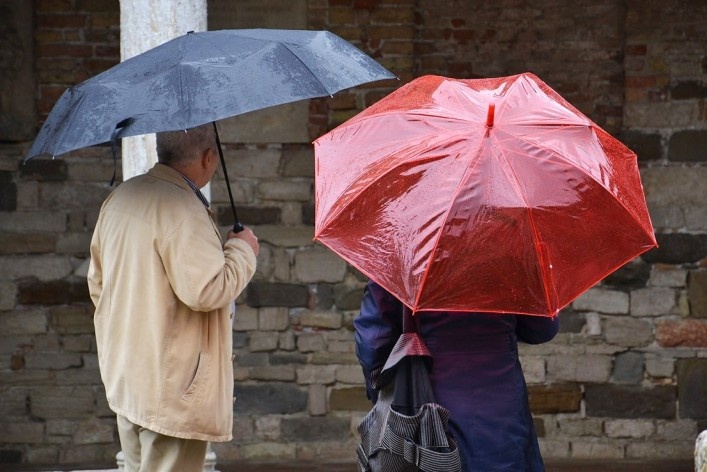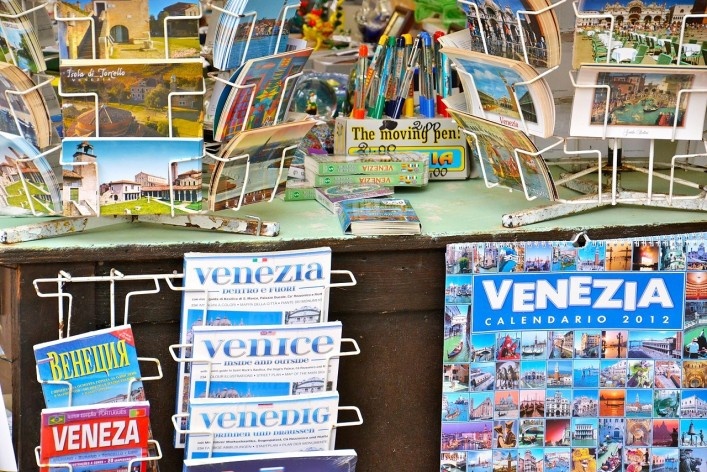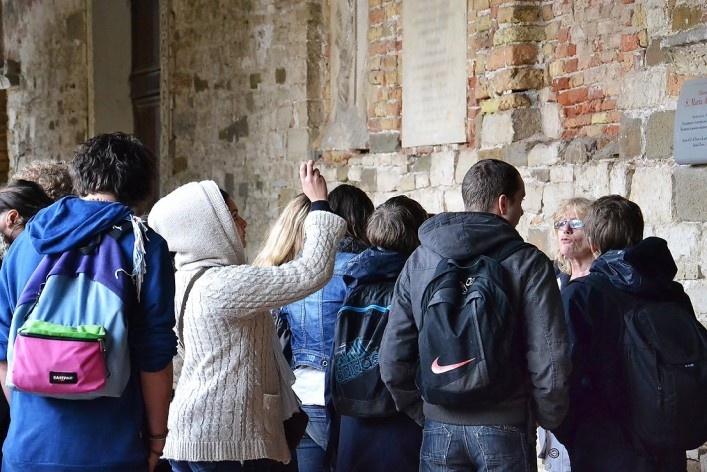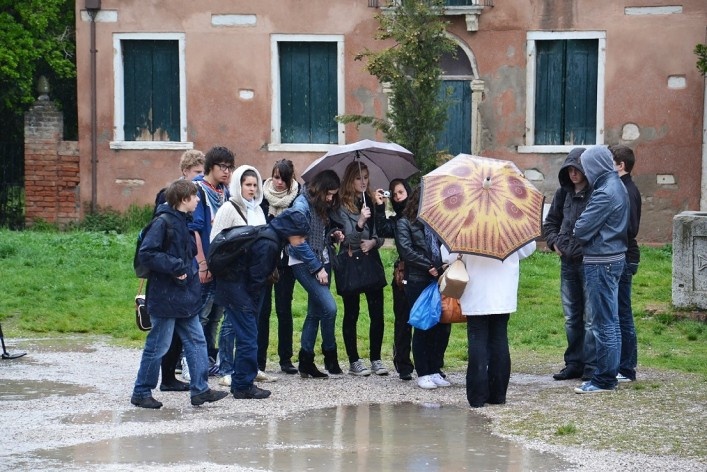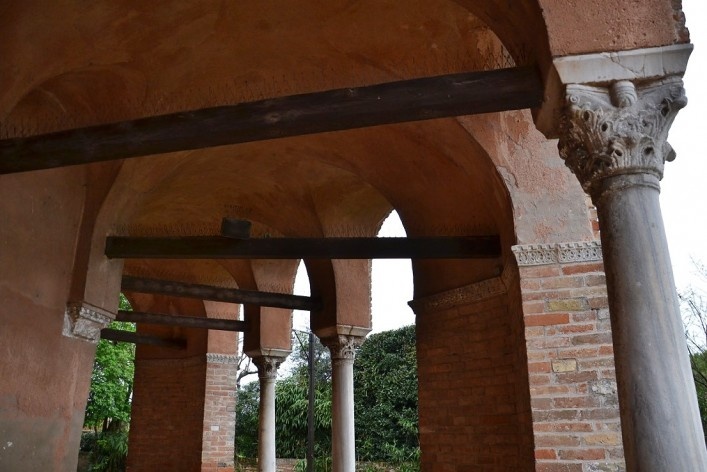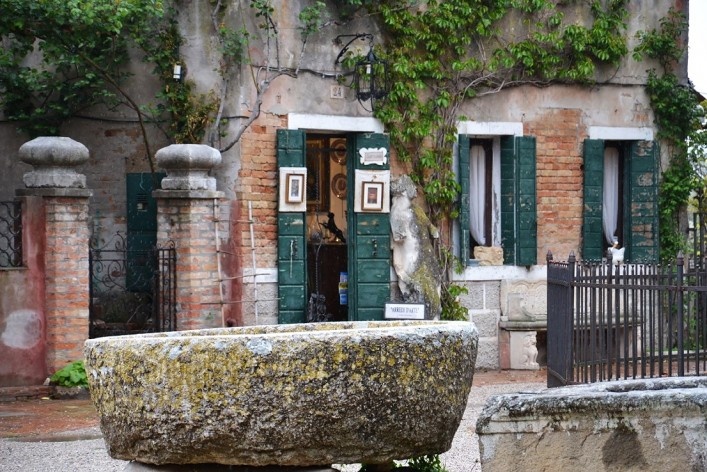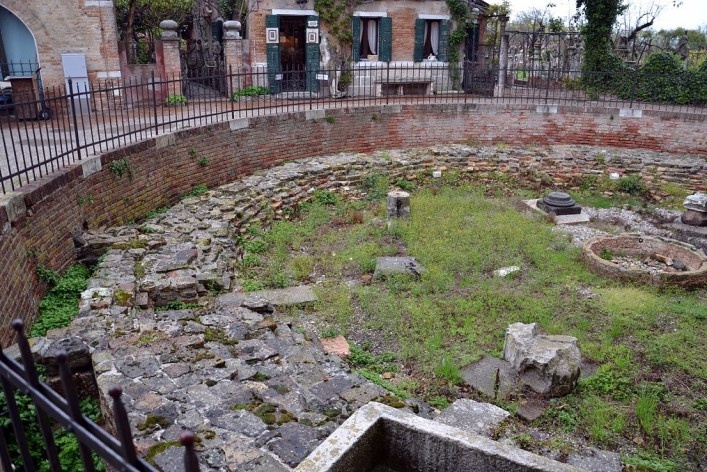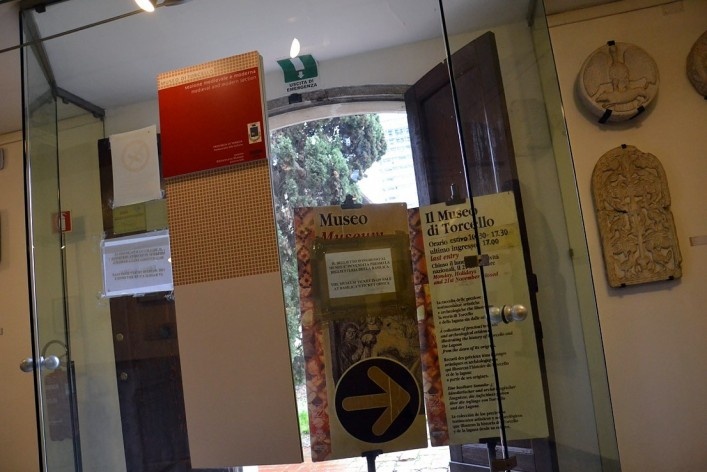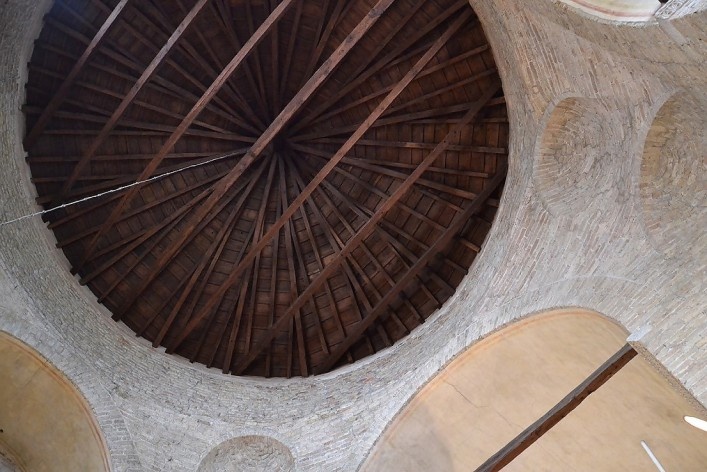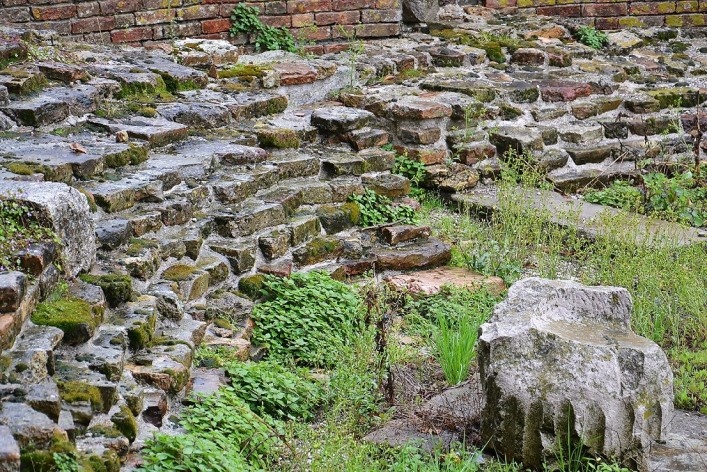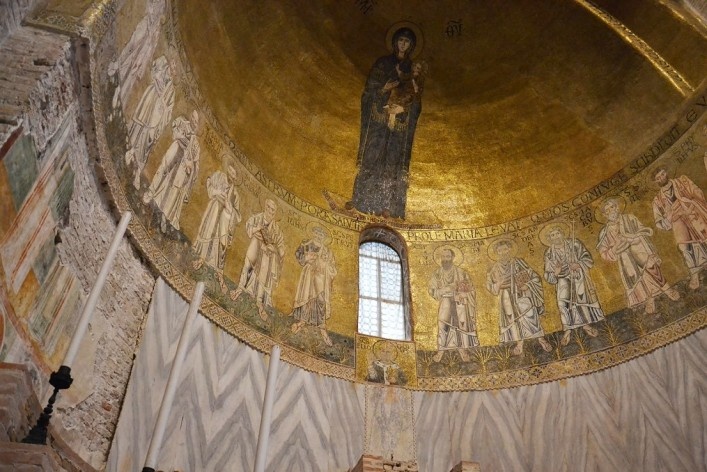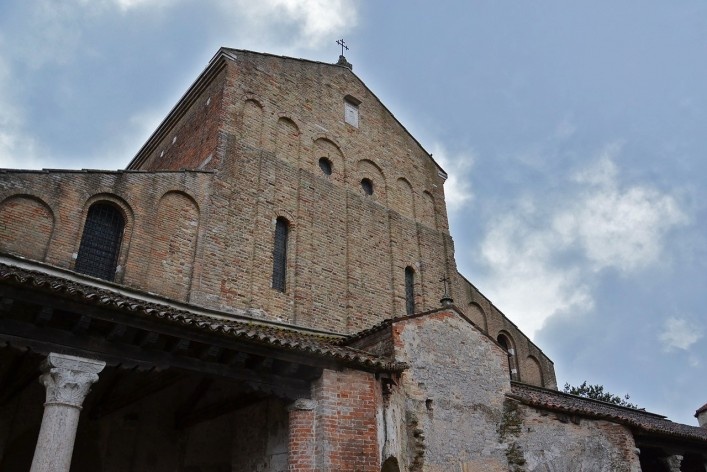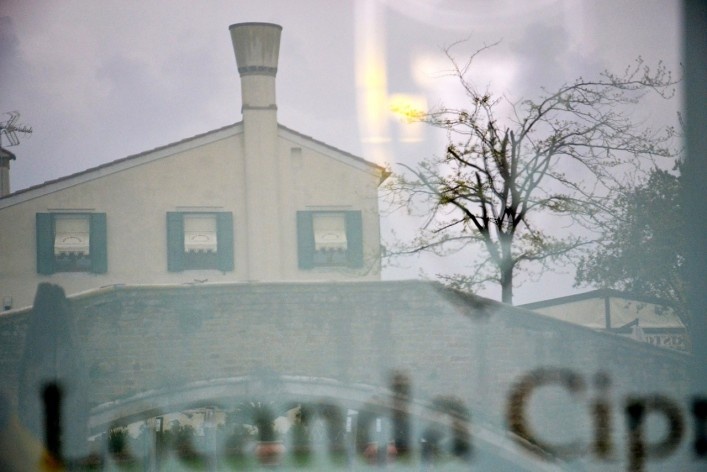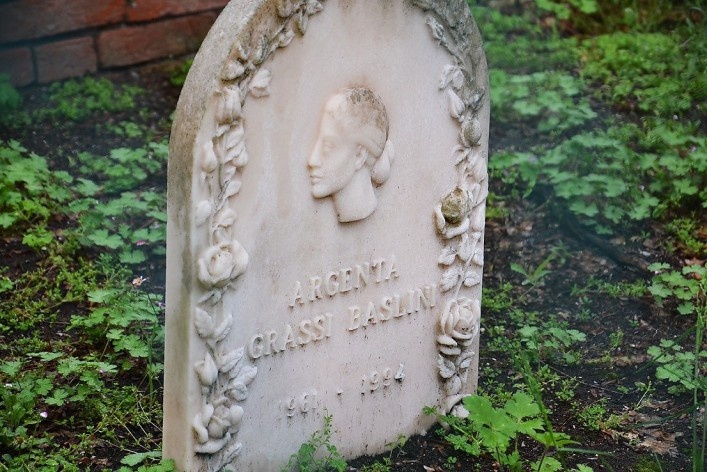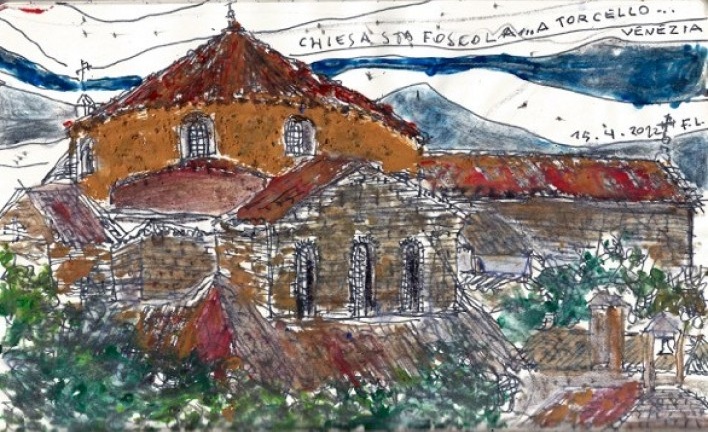The journey to Torcello was motivated by the research, during the postdoctoral stage at the Università IUAV di Venezia, in 2012, with several itineraries covered to understand the nuances between tradition and contemporaneity. This island was one of the first to be populated, still at the end of Century VII. In the year 639, the Basilica of Santa Maria was founded, dedicated to Santa Maria Assunta in the year of 1008. In the ensemble of the basilica, whose present aspect refers to the XII century, the church of Santa Fosca is also inserted, with beautiful mosaics inserted in the walls and floors.
The medieval party with the belfry and the circular volume of the nave, with exposed brick masonry and roofing on ceramic tiles, was preserved by the strength of the community. Tradition echoes on the walls, floors and ceilings, with the accumulated materiality of times past to provoke the sensibility of the visitors.
The decadence occurred approximately in the year 1400, due to problems caused by illnesses, which plagued the Serenissima Reppublica di Venezia in the years 1300 and 1500. With this, the depopulation of the island was a process that led to the ruin of the complex. Linked to this, still in the beginning of the year 1870, was installed the Museum of Torcello, which, at the present time, presents a rich archaeological collection with the history of the island and of the own origins of Venezia.
The access to Torcello is made by vaporetto, which departs from Burano, with itinerary that allows to glimpse the splendid landscape of the Laguna di Venezia with its vast surface. On landing, one notices the simplicity of the built structure, on the road that leads to the complex, by the progressive perception, along the main river, which meanders smoothly, with its bridges, where silence predominates.
The composition of the party is presented in the details of the construction, exposed by the construction system, combined with diversified materials such as massive bricks, woods, stones, ceramic tiles, which give the sense of stability and allow the enjoyment of the views in the various composite planes.
In addition to the basilica, the Archive Palace and the Council Palace, which make up the Torcello Museum, are set around the square. Restaurants such as the Locanda Cipriani and small hotels complement the services for tourists, these nowadays that moves the economy.

João Paulo II’s portrait in interior of Basilica
Foto/photo Fabio Lima
about the author
Fabio Jose Martins de Lima was born in Belo Horizonte, Minas Gerais, Brazil, on September 2, 1961 photographing since 1983. Professor at Faculty of Architecture and Urbanism at Federal University of Juiz de Fora, from 1999, In the city of Juiz de Fora coordinates the research group Urbanismo.mg/FAUUFJF, with support of Capes, CNPq, Fapemig.




